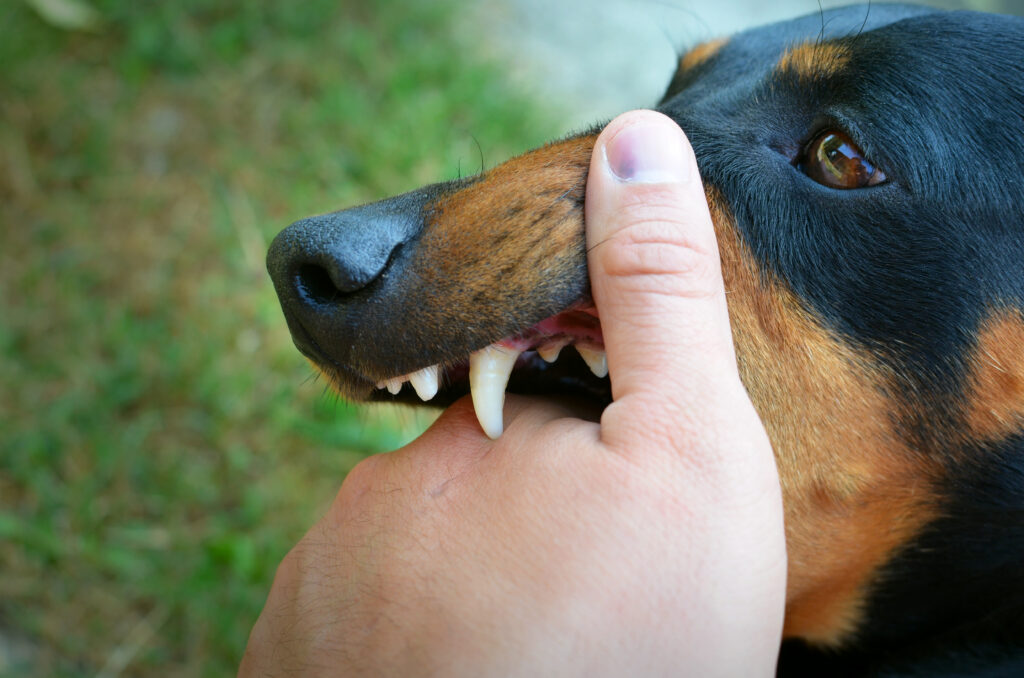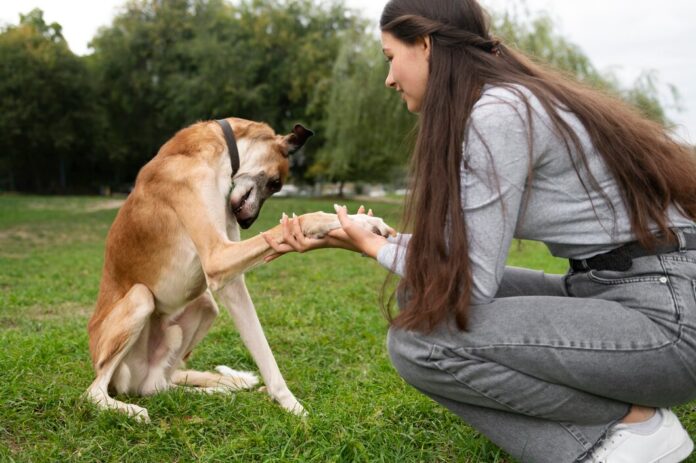People have always loved dogs for their loyalty, company, and unconditional love. But it’s important to understand that dogs can bite when they experience a different environment. They sometimes bite as a defence mechanism. Biting is one worrying behaviour of dogs. Even though most of the dogs are friendly and harmless, they can still bite if not trained properly. The awareness of it can prevent such kinds of incidents. This blog will discuss the factors influencing dog biting, cure, and training to avoid dog biting.
Table of Contents
Factors Influencing Dog Biting

Dogs can bite people as a dog’s behaviour can be influenced by various things, including temperament, socialization, and training.
Breed Misconceptions:
There is an idea that some dog breeds bite more and are more aggressive than others. A study says breeds, including German Shepherds, Pit Bulls, Rottweilers, and mixed-breed dogs bite more than the other breeds. However, recent studies have shown that a dog’s behaviour or aggressiveness cannot be predicted only by bread alone. Several other factors influence the
behaviour of dogs. Instead of believing these stereotypes, you should give your dog proper training.
Training and Socialization:
Socialization is one of the most important parts of a dog’s upbringing. It shapes their behaviour and prepares them for any situation or environment. Providing young dogs with insufficient exposure to the environment with various stimuli creates many difficulties and can cause them to bite. Expose young dogs to different people, animals, and habitats so that they feel comfortable with them. It is one of the best methods to shape their behaviour and avoid dog biting.
Well-socialisewell-socializedogs give positive responses and can be easily handled in any unfamiliar situation.
Similarly, dogs not well-need to be more dogs may need help acting according to their owners’ commands. It may lead to better communication and make the situation better.
Training techniques focusing on rewarding positive behaviour help build strong relationships between dogs and their owners.
Environmental Factors:
A dog’s behaviour can be greatly influenced by the environment in which it is raised. If a dog experiences abuse, aggressive behaviour of its owner, or a stressful environment, it becomes violent and starts biting. A careful and loving environment lessens the risks.
Health and Medical Concerns: another major factor is their health. When a dog is in pain or suffering from any disease, they may start biting or acting aggressively to defend themselves. It is very important to pay close attention to pets. Please make sure they are healthy and comfortable.
Territorial Behavior:
Dogs are naturally territorial creatures; some may be more aggressive than others when defending their territory. Proper training and socialization are necessary to control territorial inclinations and lessen the chance of protective behaviours like biting.
Prevention Strategies
Education and Awareness:
Education and awareness can help in improving dog behaviour. Breed-neutral laws, responsible dog ownership education, and dispelling myths about specific breeds can all help create a safer environment for both people and dogs.
Early SocializaSocializationning:
Young dogs should be given proper training and exposed to every environment. They should get involved with various individuals, settings, and circumstances. Positive reinforcement is one of the key factors for improving their behaviour.
Responsible Breeding Methods:
The response breeding method focuses on temperament, health, and general well-being. The possibility of undesirable behaviours can be greatly decreased by selecting a reputable breeder.
Frequent Veterinary Care:
Keeping a dog healthy and taking quick care of possible medical problems depends on routine veterinary examinations. By doing this, discomfort can be avoided, decreasing the chance of defensive actions.
Treating Dog Bites:
Dog bites can cause infection if not treated on time. If you ever face such a situation, follow these steps to prevent infection:
Safety First:
Put your safety first and get yourself out of the direct line of attack. Try to relocate to a safe area if the dog is still there and a threat.
Clean the wound:
Use warm water and a mild soap to wash the wound. To remove any dirt, debris, or bacteria, gently clean the area. Steer clear of harsh chemicals that could aggravate the wound.
Control the Bleeding:
If there is bleeding from the bite, stop it with a clean cloth or sterile bandage and light pressure. Elevate the damaged region if possible.
Apply an Antiseptic:
Use an antiseptic ointment or solution to the wound after cleansing it to help stop infection. Alternatives that are available without a prescription include hydrogen peroxide and antibiotic ointment.
Protect the Wound:
Cover the wound with a sterile bandage or clean cloth to shield it from debris and bacteria. Regularly change the dressing, especially if it gets soiled or damp.
Seek Out Medical Care:
It is essential to get medical assistance regardless of the severity of the bite. Dog bites have the potential to infect wounds by introducing bacteria. A healthcare expert can evaluate the wound, treat it appropriately, and, if required, give antibiotics.
Observe for Signs of Infection:
Observe the site closely for any indications of infection, such as discharge, redness, swelling, or increasing discomfort. Seek medical assistance as soon as possible if you have any unsettling symptoms.
Follow Medical Advice:
Follow any directions or recommendations that the medical practitioner gives you. For best recovery, adhere to wound care instructions if sutures are necessary.
Emotional Support:
Dog bites can be traumatic experiences. Offer the person who was bitten emotional support, and if necessary, think about getting professional assistance.
Conclusion:
Many factors contribute to shaping the behaviour of dogs. Understanding such factors is better than believing in the breed myths. Appropriate training, socialization care, and public awareness of dog behaviour decrease the chance of dog biting. So, it’s better to study the behaviour and response of dogs in certain situations rather than make conclusions based on breed myths.

